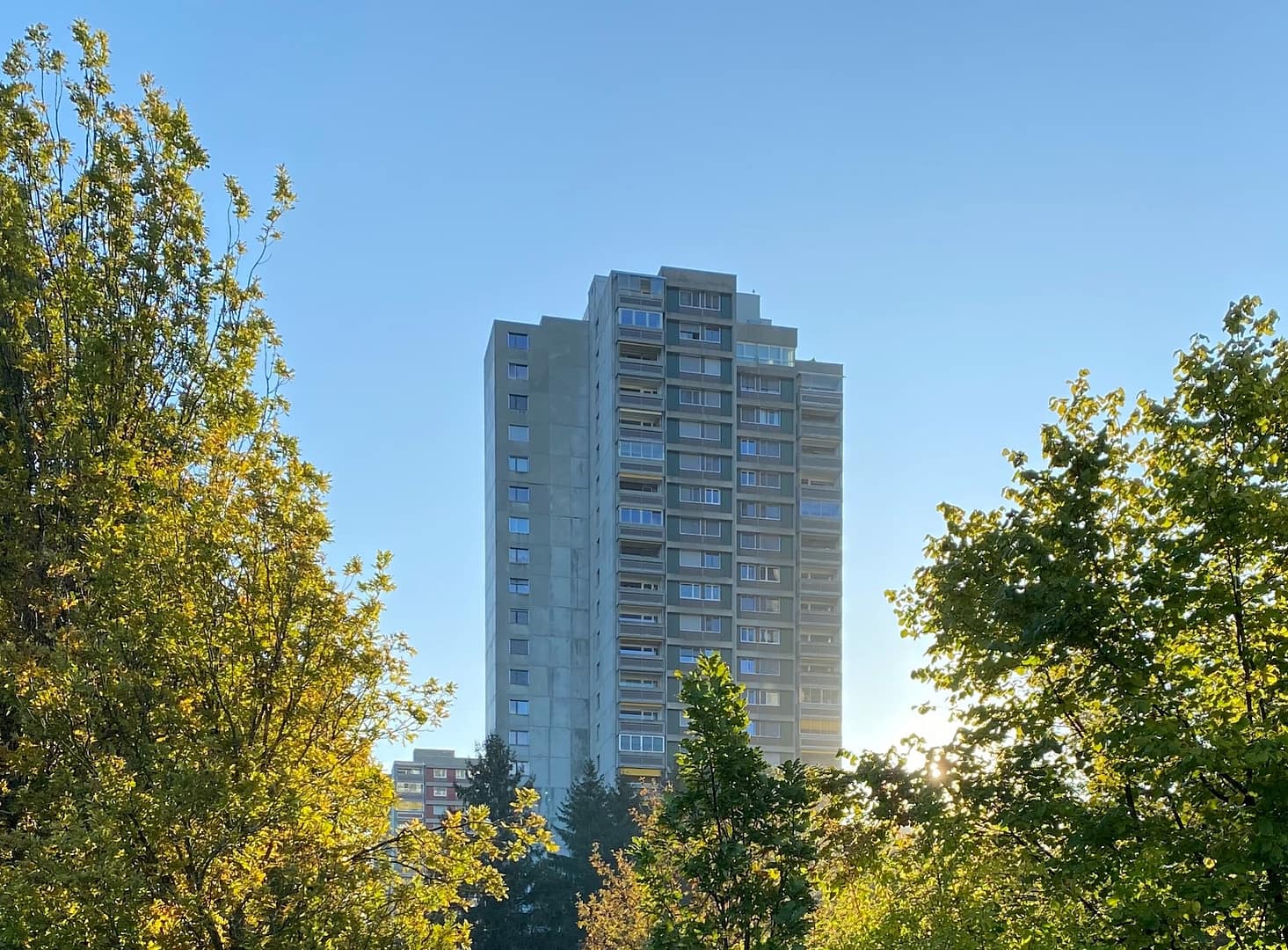In the ever-evolving realm of architecture and housing, one poignant question emerges: “Can architecture help reduce the severity of housing disrepair?” This is not a mere query about aesthetics but a crucial exploration into the profound ways in which architecture and design can alleviate the problems plaguing the housing sector. In this article, we will delve into the role of architecture in housing, emphasising its importance and the critical role it plays in mitigating housing disrepair. We’ll explore the significance of building design in social housing development and how architects can be instrumental in addressing this critical issue.
The Essence of Architecture in Housing
Architecture goes beyond aesthetics. It is the art and science of designing spaces that are functional, safe, and sustainable. In the context of housing, architecture plays a pivotal role in addressing a plethora of challenges, one of which is housing disrepair.
Housing disrepair is a significant concern in many parts of the world, including the UK. It refers to the deterioration of a dwelling or building, often caused by neglect, lack of maintenance, or inadequate construction. The consequences of housing disrepair can be dire, affecting the well-being and quality of life of its occupants.
When we consider the role of architecture in addressing housing disrepair, several key aspects come to the fore:
Design for Longevity
Architects are tasked with designing buildings that can stand the test of time. This means using materials that are durable and resistant to wear and tear. By employing principles of longevity in design, architects can help reduce the severity of housing disrepair. A well-designed building will have a longer lifespan and require fewer repairs.
Sustainable Architecture
Sustainability is a cornerstone of modern architecture. Sustainable design principles promote environmentally friendly construction and maintenance practices. By incorporating sustainable features, such as energy-efficient systems and materials, architects can reduce the environmental impact of housing and lessen the need for extensive repairs.
Accessibility and Universal Design
An often-overlooked aspect of architecture is its role in making housing accessible to all. Universal design principles ensure that buildings are accommodating for people of all ages and abilities. This includes features like ramps, wider doorways, and easy-to-reach fixtures. By incorporating universal design, architects create housing that is more resilient to disrepair caused by regular wear and tear.
Innovative Building Materials
Advancements in architectural technology and building materials have given architects a wider array of options to work with. Innovative materials, like high-performance insulating systems, weather-resistant cladding, and low-maintenance finishes, can reduce the severity of housing disrepair. These materials are not only more resilient but also require less maintenance.
The Importance of Building Design in Social Housing Development
Social housing, also known as public or affordable housing, plays a vital role in providing shelter and support to those in need. The design of social housing developments is critical in addressing housing disrepair. Let’s explore some of the key ways in which architecture can make a difference in social housing.
Space Optimisation
Space optimisation is at the heart of architectural design. Architects can maximise the use of available space in social housing developments, ensuring that every square metre is utilised efficiently. This not only creates more livable spaces but also reduces the likelihood of overcrowding, which can lead to faster wear and tear.
Durable Materials
The choice of materials is paramount in social housing design. Architects can specify durable, low-maintenance materials that can withstand the rigours of constant use. By using materials that require less upkeep, the severity of housing disrepair can be significantly reduced.
Community-Centric Design
Social housing is not just about providing shelter; it’s about creating communities. Architects can design these developments to foster a sense of community and social cohesion. A well-designed communal space can encourage residents to take pride in their environment, reducing the likelihood of neglect and disrepair.
Energy Efficiency
Energy-efficient design is a win-win for both residents and the environment. Architects can incorporate features like better insulation, energy-efficient lighting, and heating systems in social housing projects. This not only reduces utility costs for residents but also helps maintain the building’s overall condition.
Maintenance Considerations
Architects can play a pivotal role in the long-term maintenance of social housing developments. By designing spaces that are easy to maintain and access, they empower housing management to carry out necessary repairs and maintenance tasks efficiently. This proactive approach can significantly reduce the severity of housing disrepair.
The Architect’s Role in Addressing Housing Disrepair
Architects are not mere creators of buildings; they are problem solvers, visionaries, and advocates for their clients and communities. In the context of housing disrepair, architects can be powerful agents of change. They can work in various capacities to address this critical issue.
Consultation and Design
Architects can provide invaluable advice and expertise during the initial stages of a housing project. By collaborating with housing developers, architects can help design buildings that are not only aesthetically pleasing but also functional and durable. Their expertise can lead to housing that is less prone to disrepair.
Renovation and Restoration
For existing housing stock suffering from disrepair, architects can lead renovation and restoration efforts. They can assess the extent of damage, develop a restoration plan, and oversee the implementation of necessary repairs. Their involvement ensures that the building’s historical and architectural significance is preserved while addressing disrepair.
Advocacy and Education
Architects can also serve as advocates for housing quality and disrepair reduction. They can engage with local authorities, community organisations, and housing agencies to promote the importance of well-designed housing. Additionally, architects can educate residents on proper maintenance practices and the benefits of a well-designed living environment.
Sustainable Solutions
Incorporating sustainable solutions into housing projects is a fundamental aspect of modern architecture. Architects can champion sustainable building practices and materials to reduce the environmental impact of housing, which, in turn, can decrease the severity of disrepair. Their commitment to sustainability can lead to long-term benefits for both the environment and residents.
Making a Housing Disrepair Claim with National Claims
If you find yourself in a situation where housing disrepair is causing significant problems, you have the option to seek assistance. National Claims is here to help you navigate the claims process.
Note: You can only make a claim if you are currently living in social housing.
Assessment and Documentation
First, you need to assess the extent of the disrepair and gather all relevant documentation. This may include photographs, maintenance records, and any communication with your landlord or housing provider regarding the issues.
Contact National Claims
Get in touch with National Claims to initiate the process. Our team of experts specialises in housing disrepair claims and can provide you with the guidance you need. We will review your case and advise you on the next steps.
Legal Action
If your housing disrepair case warrants legal action, National Claims will help you navigate the legal process. We work with a network of experienced solicitors who can represent you in court and ensure that your rights as a tenant are protected.
Resolution
National Claims is committed to achieving a resolution that benefits you as the tenant. Whether it involves repairs, compensation, or a change in housing arrangements, our goal is to ensure that you have a safe and comfortable living environment.

Conclusion
Architecture has a pivotal role to play in reducing the severity of housing disrepair. By emphasising design for longevity, sustainability, accessibility, and innovation, architects can create buildings that are resilient to the challenges of disrepair. In social housing development, architects can optimise space, choose durable materials, and promote community-centric design to address disrepair from the outset.
The architect’s role is not limited to design; they can serve as consultants, renovation experts, advocates, and champions of sustainable solutions to combat housing disrepair. Through collaborative efforts with housing developers, local authorities, and community organisations, architects can create a future where housing disrepair is less severe, and everyone can enjoy safe, comfortable, and well-maintained homes.
So, to answer the question, “Can architecture help reduce the severity of housing disrepair?”—the resounding response is a definitive yes. Architecture, with its multifaceted contributions, can be a driving force in the battle against housing disrepair, making homes safer, more durable, and more enjoyable for all.
In cases where housing disrepair has already taken a toll, National Claims are ready to assist. Whether through assessment, legal action, or resolution, seeking help is an essential step toward rectifying housing disrepair and ensuring that your rights as a tenant are protected.
As we move forward, let us recognise the transformative potential of architecture and design in addressing housing disrepair. Through innovation, sustainability, and a commitment to creating safe and enduring spaces, architects and their partners can contribute to a world where housing disrepair is a far less severe and widespread problem. By working together, we can strive to make housing a place of comfort, security, and lasting beauty for everyone.
Contact us today to get a start on your claim and to find out more about how we can deal with your housing disrepair.
Click below to see why we are one of the most trusted claims management companies in the UK.

We’re proud of our excellent customer reviews
We thrive on delivering exceptional service and ensuring our clients’ satisfaction. Don’t just take our word for it. Check out some of our independent reviews to see what our clients have to say.
Excellent

This firm is excellent, they sorted out my car pay out and injury claim very fast, they always communicate with you all the time.

My accident case was dealt with confidence and with great result of the outcome, especially James kept me informed all the time.

I was very impressed at the way my inquiry was treated. I was listened to attentively and everything I needed to know was explained to me.






